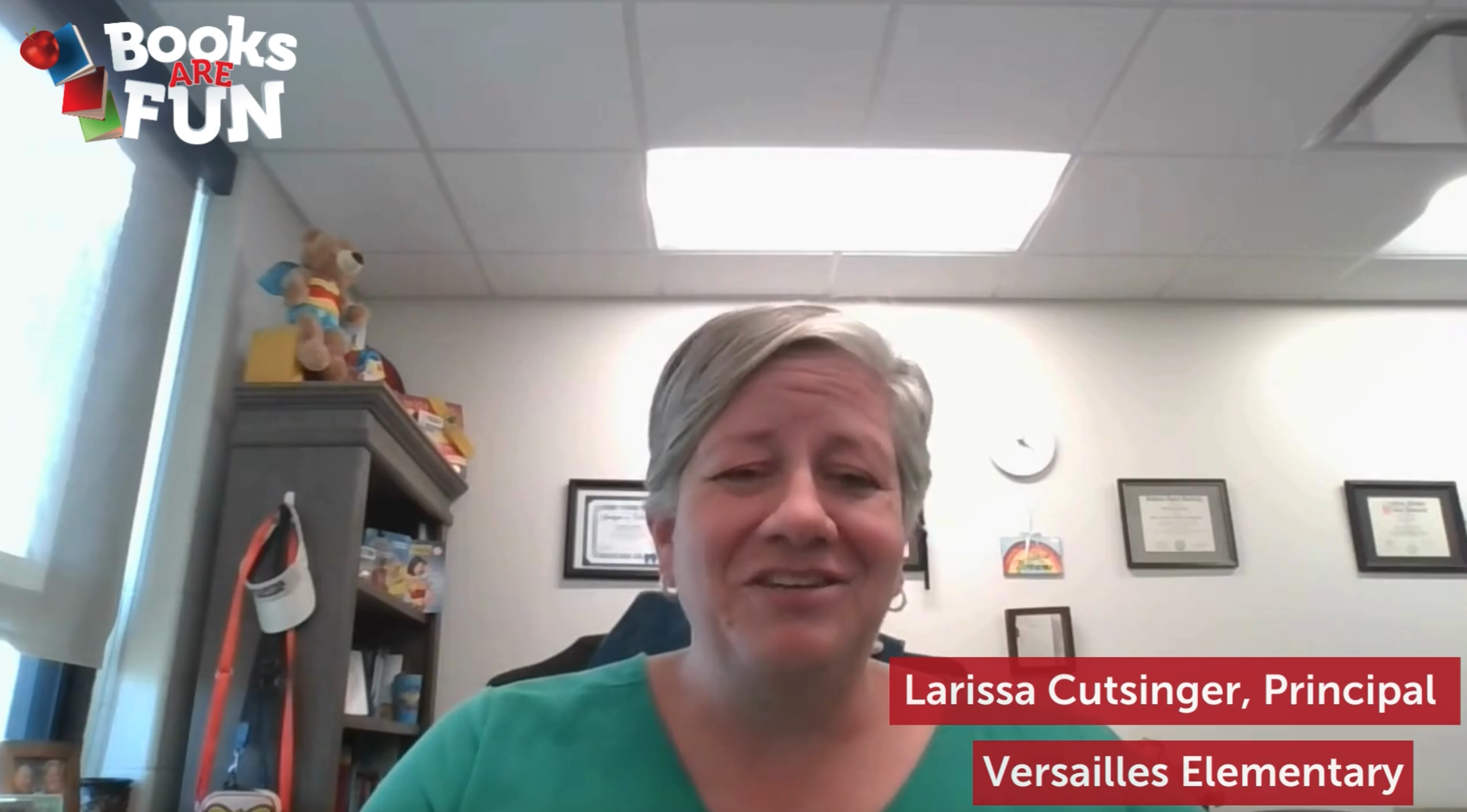Fostering a Love for Reading: How Principal Larissa Cutsinger is Building a Literacy Culture
10/29/24 9:58 AM

Books Are Fun Team Member

Building a culture of reading in schools takes dedication and creativity. For Larissa Cutsinger, at Versailles Elementary in Versailles, Missouri, fostering a love for reading has been a constant effort, but it's one that is paying off. Principal Cutsinger shared her approach, her challenges, and how programs like Book Blast help bring reading to life for students.
How do you foster a culture of reading within your school? What role does Book Blast play in that?
"This has been a labor of love, and we continue building on it every year," says Principal Cutsinger. One of the first steps was moving away from the AR (Accelerated Reader) program, which had strict guidelines about what students could and couldn’t read. "If we want students to love reading, they have to want to read, and with AR, they didn’t."
Instead, the school adopted the American Reading Company curriculum for Reading/ELA. "This program is very book-rich, with real books from kindergarten to high school levels. There’s a wide variety of genres and texts, so there’s something for everyone."
The school’s only homework requirement is that students read for 30 minutes each night, and they can choose anything they enjoy. One memorable success story involved a fifth grader who only wanted to read cattle and stock prices. "His mom reached out, and we encouraged him to count that as reading. Over time, we introduced him to nonfiction books about farming, and soon he was reading everything related to animals."
Book Blast plays a big role by kicking off the school year with excitement and providing students with new books. "We also use any profits to purchase more books, which we give to students who reach reading milestones throughout the year."
What are some of the biggest challenges you face in getting students excited about reading?
"The biggest challenge is finding the 'right' book or series to get students hooked," Principal Cutsinger says. Once students find a book they connect with, the rest tends to fall into place.
Another challenge was shifting teachers’ mindsets from the AR system, which restricted reading choices, to allowing students more freedom in selecting books. "Students can now read any book, at any level, or even re-read books they’ve loved. We help them find their 'just right' level, but we also let them choose books that might be more challenging or something quick and easy. It’s about keeping them engaged."
Can you share a time when you saw a student's attitude toward reading change?
One example Principal Cutsinger shared is the student who initially only wanted to read cattle prices. Over time, his interest in reading expanded.
Another success story involves a student who became determined to break his reading goal each year. "We measure reading in 'steps,' and each step equals 15 minutes of reading. Last year, this student completed over 2100 steps—that’s more than 31,500 minutes or 525 hours of reading. We have a 'Super Reader' plaque in the hallway, and the student with the highest step count each year gets their name added to it. That’s become a huge motivator."
How do you involve families and the community in promoting a love for reading?
"We incorporate reading into as many activities as we can," Principal Cutsinger explains. The school hosts two family reading nights each year, along with parent and grandparent reading events. At the city’s Halloween celebration, the school sponsors a booth where they hand out gently loved books along with candy.
The school also regularly publishes articles in the local newspaper about the importance of reading and tips for families on how to support reading at home. "We’ve partnered with our local library to support their programs, and next summer, we’re hoping to collaborate with the city pool and parks department for story time events."
The school is also launching the "Rocking Chair Readers" program. "It’s a group of retired volunteers who come into the school to read with students who need extra help with vocabulary, comprehension, or reading support. We’re excited to see what this brings to the students."
What advice would you give to other principals looking to build a strong culture of literacy in their schools?
"Model a love of reading and don’t be afraid to be silly," Principal Cutsinger advises. The school motivates students to reach ambitious reading goals by offering fun and unexpected rewards. "We’ve had sleepovers at the school, where the assistant principal and I stayed overnight. We’ve dressed in cow and pig inflatable costumes for pick-up duty, and we’ve even spent a day as students in the classroom."
The key, she says, is to make reading fun and accessible. "We’re willing to do anything to encourage our students to read. But it’s also about providing them with the resources, time, and support they need to succeed."
Explore the heartwarming stories from our principals and educators about the amazing impact of Book Blast. Reach out to us today to plan a memorable literacy event at your school!
Read and Hear Their Stories
Disclaimer: Books Are Fun partners with schools to promote reading through programs like Book Blast. Mention of any specific programs, books, or services in this article isn’t an endorsement. Availability of products and offers may vary.
